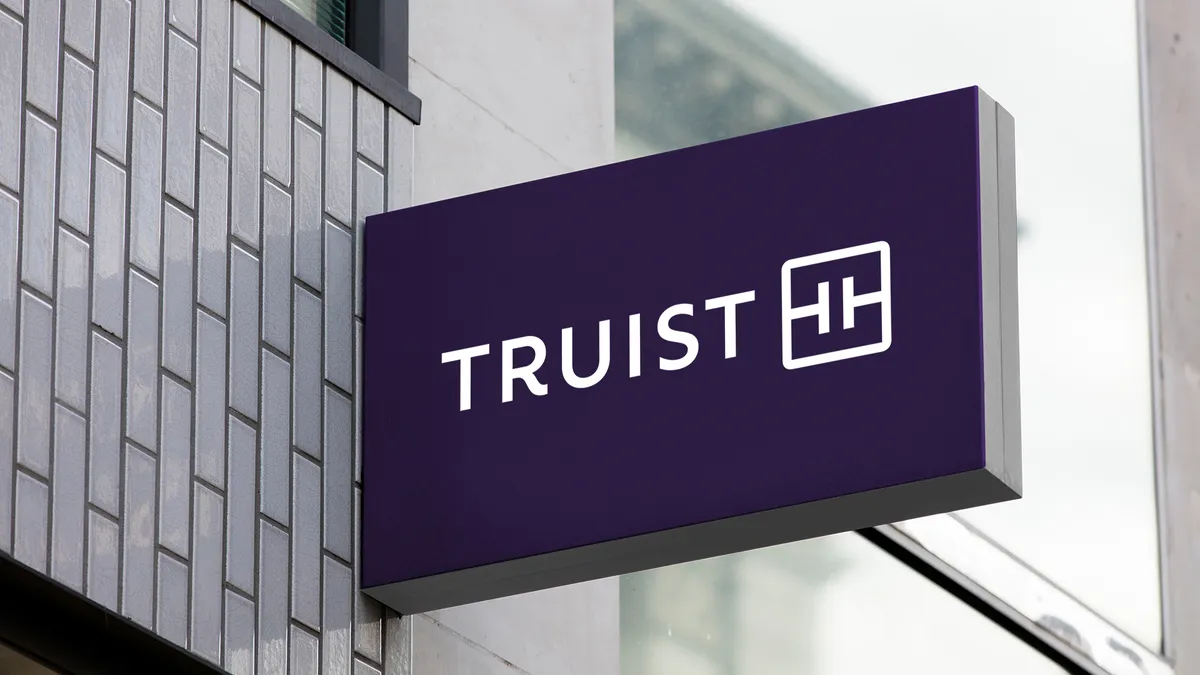Dive Brief:
- With merger risk in the rear-view, Truist plans to deploy capital into areas where it can achieve growth, such as nonbank M&A, CEO Bill Rogers told analysts during the bank’s second-quarter earnings call Tuesday.
- Rogers highlighted insurance as a potential inorganic growth area for the $545.1 billion-asset bank.
- The initiative comes as the bank said investments in wages, hiring and technology are expected to contribute to a 2% to 3% rise in noninterest expenses this year.
Dive Insight:
“We’re using capital exactly where we want to right now, so using it with growth,” Rogers told analysts. “We do see more opportunities for nonbank M&A, so we're going to allow capacity and be opportunistic there, as well.”
Truist has the flexibility it needs to fund potential acquisitions, particularly in the insurance sector, Rogers said.
Previous insurance-related deals made by the Charlotte, North Carolina-based bank include its acquisition of insurtech Wellington Risk Holdings in December 2020.
That same year, Truist also finalized deals with Irvine, California-based Brown & Associates Property & Casualty; Specialty Risk Associates, a Shreveport, Louisiana-based firm; and Program Insurance Management of Sarasota, a Florida-based underwriter with specialized programs for industrial chemical manufacturers and distributors.
With the bank’s focus on acquisition, Rogers said share repurchases are “not our top priority at this particular juncture.”
The bank repurchased $250 million in shares during the quarter ending June 30, compared with $610 million in the second quarter of 2021.
Increase in expenses
Efforts aimed at helping the bank maintain growth are also contributing to a rise in expenses, CFO Daryl Bible said Tuesday.
“We now expect adjusted noninterest expense to increase 2% to 3% from 2021,” he said. “This increase in expense outlook largely reflects higher operating losses and intentional investments to support our shift from integrating to operating, including increasing our minimum wage, hiring teammates to support client experience and growth, and ongoing investments in technology.”
Truist said this month it would boost its minimum U.S. hourly pay rate to $22 this fall.
The pay raise will affect roughly 14,000 Truist employees, including 81% in client-facing roles primarily within the bank’s retail and small-business banking units, the lender said.
The bank’s minimum wage now ranges from $15 to $18 per hour, based on geography, according to the bank.
The upcoming minimum wage increase is expected to boost the bank’s personnel expense by $200 million annually, Bible said.
Since the announcement of the $28 billion combination of SunTrust and BB&T that formed Truist, executives have voiced their goal of achieving $1.6 billion in annual net savings from the merger — a mark the bank hopes to hit by this year’s fourth quarter.
Truist has been consolidating branches and decommissioning data centers in order to cut costs, but merger-related expenses remain.
The bank reported $238 million in merger-related costs during the most recent quarter, compared to $297 million in the second quarter of 2021.
Truist reported net income of $1.5 billion for the second quarter, down 6.7% from last year’s comparable period.
The bank set aside $171 million for credit losses during the quarter, compared to the $434 million it released a year earlier.











